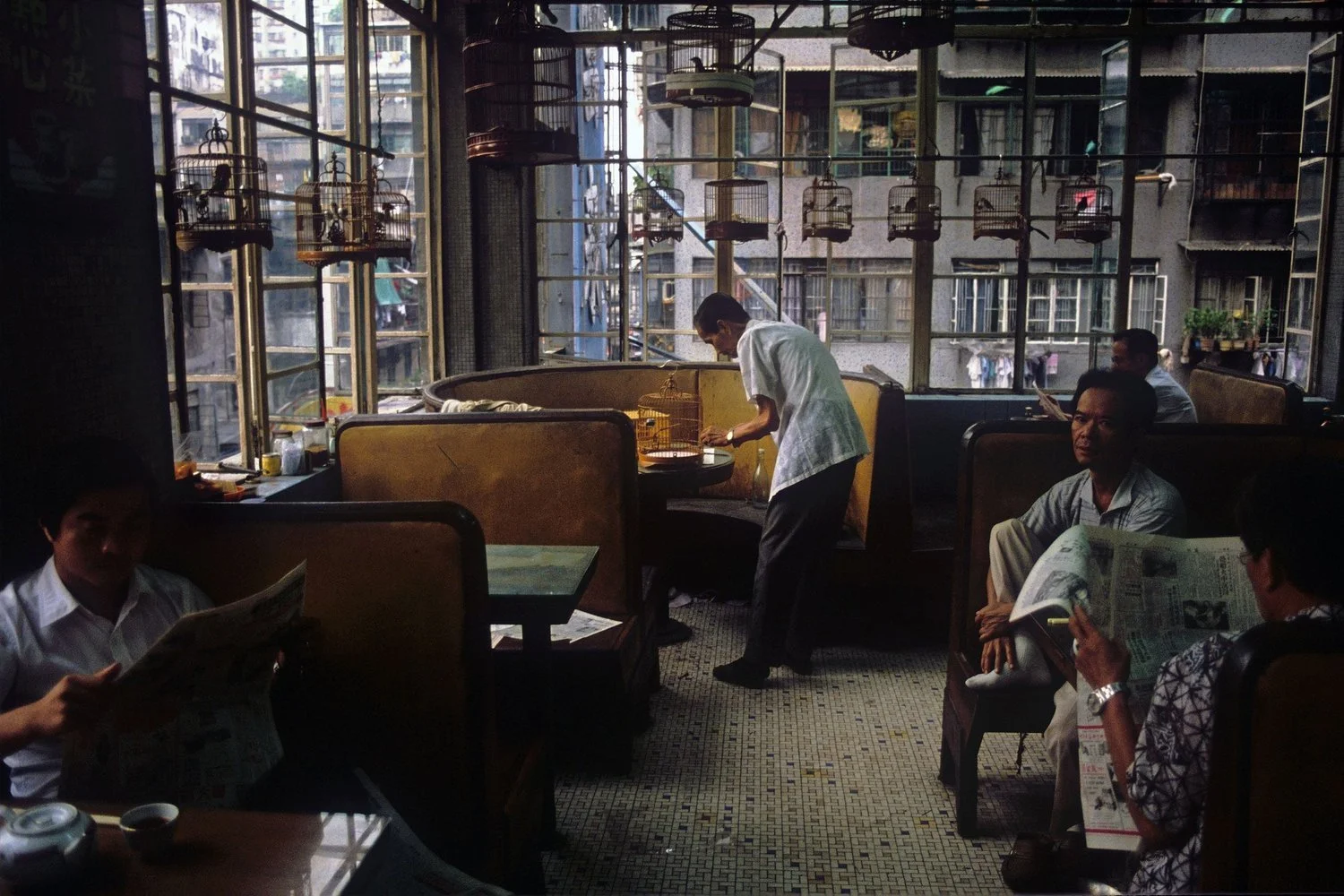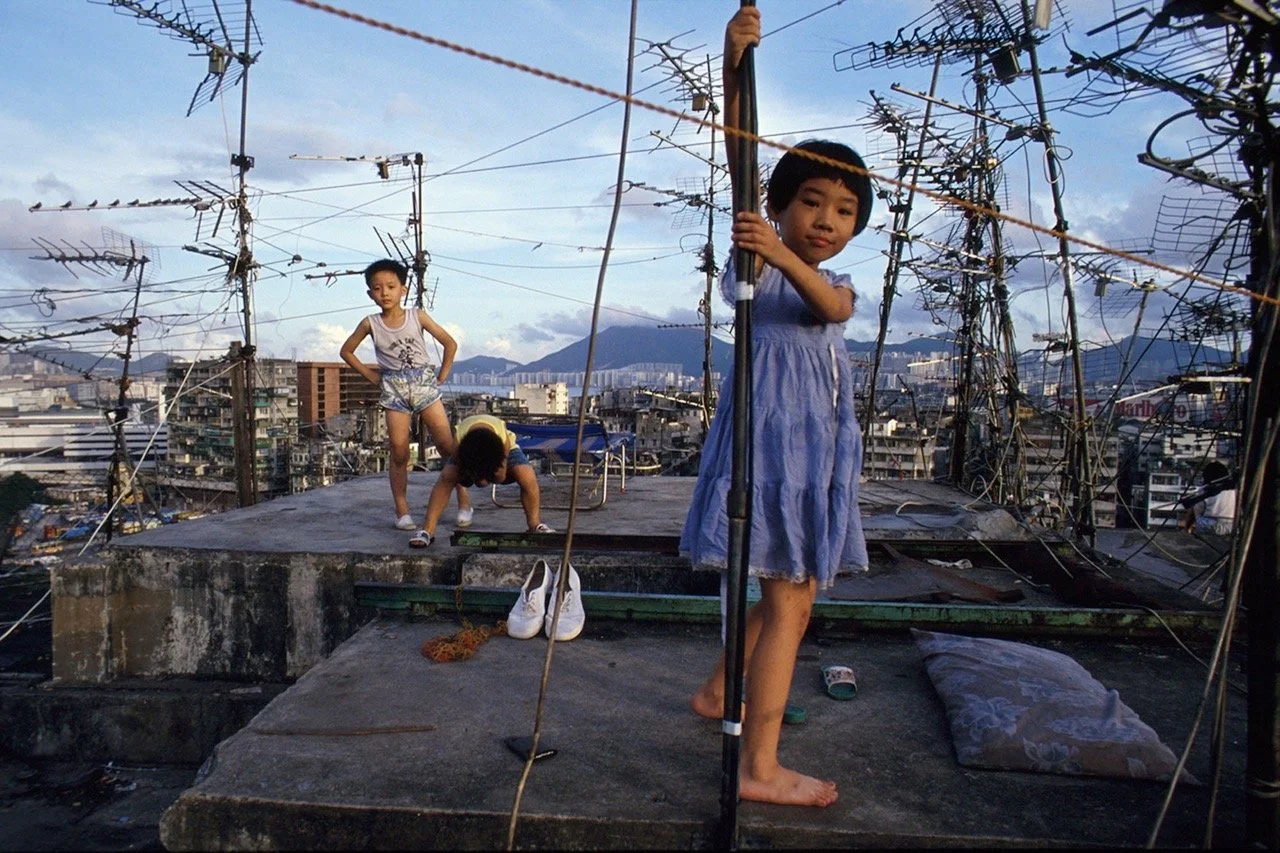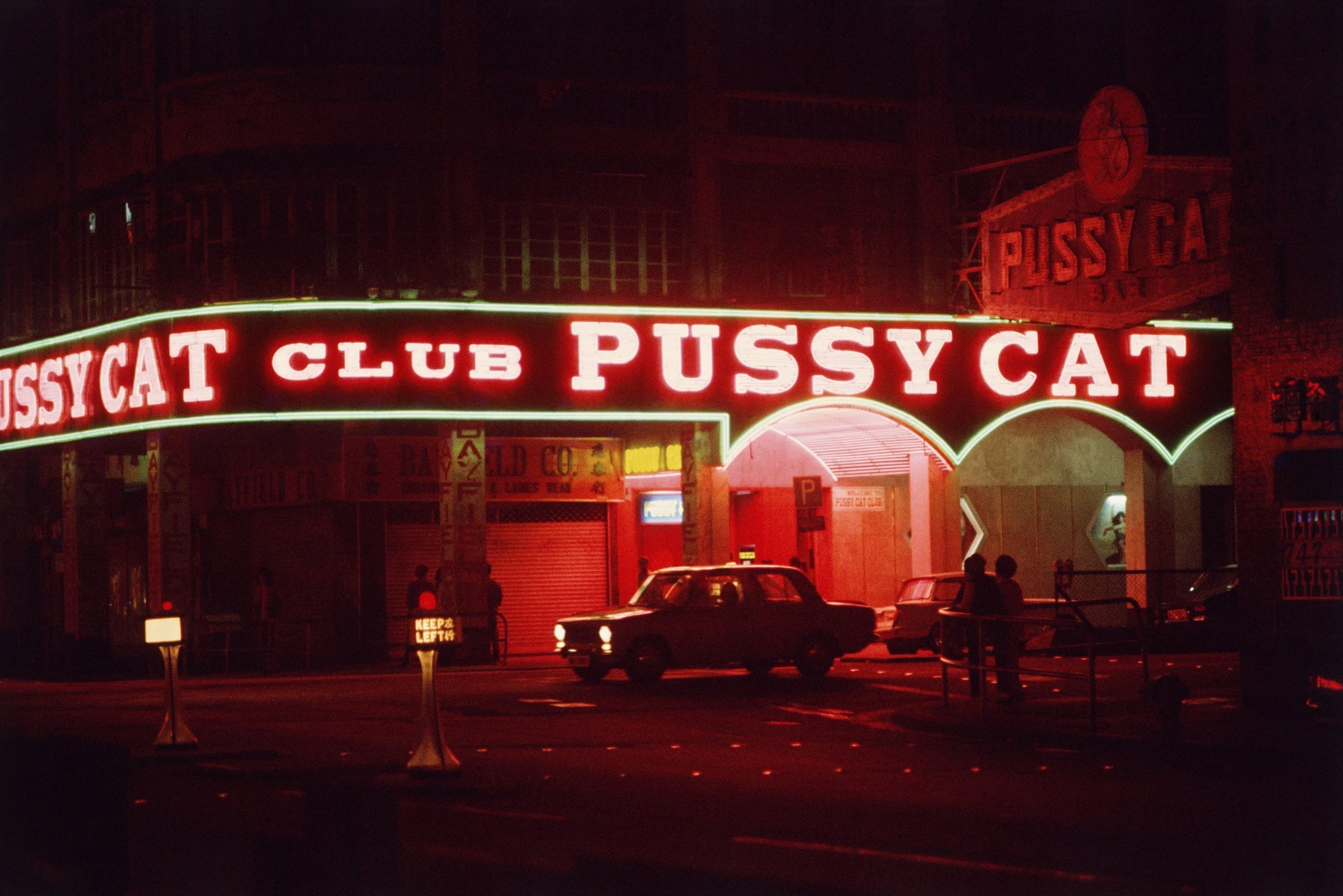Since our inception, Blue Lotus Gallery has remained committed to exploring Hong Kong’s identity and culture through the lens of photography, and few have done so in the manner of Greg Girard.
Though born in Vancouver, Girard is best known for his depictions of East Asia’s major cities, capturing them during a period of dramatic transformation in the late 20th century. Nowhere is this more apparent than in his work in Hong Kong, a city he first visited in 1974 and later called home for over a decade. Arriving during the so-called Golden Age — a time of swift economic expansion and cultural change — he documented the city with a sharp eye for light, colour, and composition: from its neon-lit nightscapes to the labyrinthine interiors of the now-demolished Kowloon Walled City.
Bar Interior, Hong Kong, 1985 © Greg Girard
Today, his vision of a bygone Hong Kong returns to the city in a striking new form. HK:PM, a moving presentation of Girard’s analogue photographs from the 1970s to 1990s, is currently illuminating the monumental M+ Facade — one of the world’s largest media displays — and is also being shown at Hong Kong International Airport. Selected prints from the series are featured in our ongoing group exhibition, Blue Lotus Revisited, which reflects on the gallery’s most iconic moments and artists to date.
Wan Loy Teahouse, Mongkok, Hong Kong, 1985 © Greg Girard
'Plaza Grill', Wanchai, Hong Kong, 1974 © Greg Girard
Let’s start with HK:PM on the M+ Facade. What was it like seeing your work projected at that scale and in that context, across the Hong Kong skyline?
G.Girard: Quite unreal. I more or less know my pictures, and I more or less know the Hong Kong skyline, but to see the former superimposed on the latter was a pronounced shift in the usual frames of reference.
What was the process like for adapting your still photographs into a moving-image presentation? Did it challenge how you normally think about sequencing or narrative?
G.Girard: Sequencing pictures is something I've done before, for books and exhibitions, and more recently in a film-type display with live music in a cinema setting (at M+ last year), but this was the first time to consider how they might look on one of the world's largest video displays. This introduces new possibilities, and constraints as well. How might they look from various distances? How will they look in the midst of other displays on the skyline, with marine traffic, or partially glimpsed from a ferry mid-harbour? I gladly accepted guidance from the team at M+, who have worked on this with other artists, and then you have your own instincts and ideas as well about how things might flow together at this unprecedented scale.
HK:PM on the M+ Facade © Greg Girard / M+
You spent over a decade living in Hong Kong during its so-called ‘golden age.’ Looking back at those photographs now, how do you feel about that period in your life, both personally and creatively? How did that time shape your practice?
G Girard: Looking back at those photographs underlines what a key time it was for me, being slightly adrift in the beginning and then finding my way. I was always hugely attracted to Hong Kong, or maybe I should say to photographing in Hong Kong. Either way, the city gave me my start as a working photographer, which I note and pay tribute to in the film "Hong Kong Made Me". And as it happens, the period was indeed what's now considered the city's "golden age". Though of course you rarely realize you're in the golden age of anything until it's over.
Children Playing on Walled City Rooftop, Hong Kong 1989 © Greg Girard
'Pussy Cat Club', Wan Chai, Hong Kong, 1974 © Greg Girard
How do you see the city today compared to the one you captured in the 1980s and ’90s? What strikes you most about what has changed, or what hasn’t?
G Girard: Every place goes through an evolution on its way to becoming its most authentically realised version of itself. For Hong Kong, up until now, it has to be that period in the 80s and 90s where Hong Kong's popular culture was not only consumed in HK but also exported around the world. For many, it was received as "Chinese" popular culture, since the mainland hadn't yet started producing and exporting film or music on a comparable level, though it soon would.
Woman at tram stop, Central, Hong Kong, 1974 © Greg Girard
In addition to M+, some images from HK:PM are currently on display at Hong Kong International Airport and in our ongoing exhibition "Blue Lotus Revisited". This means they will reach a diverse audience, ranging from photography enthusiasts to people who might not typically engage with photography or gallery exhibitions. What do you hope viewers from these different backgrounds will take away from your work?
G.Girard: Like any billboard or public display in a setting where you're surrounded by, bombarded by sensory stimuli, you mostly tune it out as you go about your day or evening. If any of the images causes a person to linger long enough to do a double-take, and wonder "hmm, what's that?" I'll consider it a wildly successful connection to me and Hong Kong and Hong Kong's recent past.
HK:PM is on display nightly on the M+ Façade until September 28.
Selected images from the series are featured in our current exhibition, Blue Lotus Revisited, on view until October 12.








